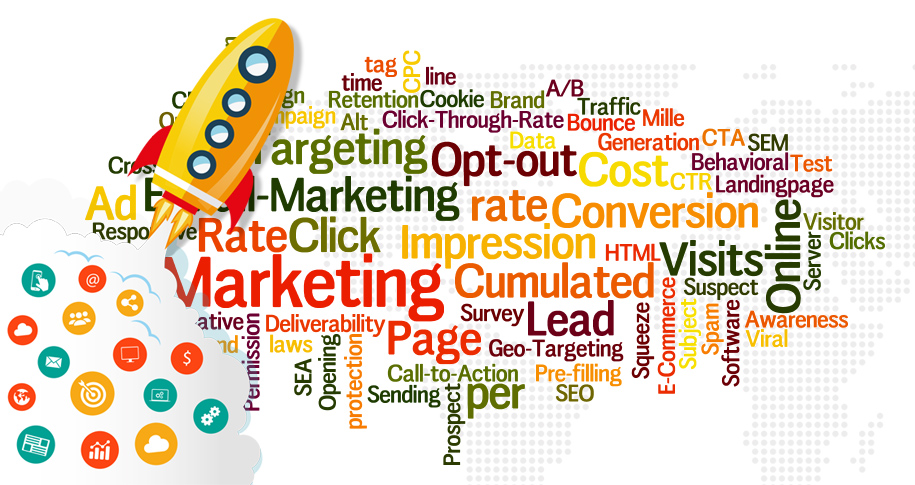What Is PersonalizationWhat Is Personalization in Marketing?... More in Marketing?
PersonalizationWhat Is Personalization in Marketing?... More in marketing refers to the process of tailoring messages, content, and experiences to individual customers based on their preferences, behaviors, and interactions. The goal is to create more relevant and engaging experiences that resonate with customers, ultimately driving higher levels of engagement and conversion. PersonalizationWhat Is Personalization in Marketing?... More can take many forms, from addressing a customer by name in an email to offering tailored product recommendations on an eCommerce site based on browsing history.
Why Is PersonalizationWhat Is Personalization in Marketing?... More Important?
- Improved Customer Experience
- PersonalizationWhat Is Personalization in Marketing?... More enhances the customer experience by making interactions more relevant and tailored to their needs. This leads to higher satisfaction and a more positive perception of the brand.
- Example: A retail website that greets returning customers by name and recommends products based on their previous purchases creates a personalized shopping experience.
- Increased Conversion Rates
- By delivering content and offers that are aligned with a customer’s interests, businesses can improve conversion rates. PersonalizationWhat Is Personalization in Marketing?... More encourages customers to take action because they feel the brand understands their needs.
- Example: A user who has shown interest in a specific product category can be targeted with promotions or discounts related to that category, increasing the likelihood of a purchase.
- Higher Engagement
- Personalized marketing campaigns typically result in higher engagement rates because they resonate more with customers. When customers feel like the brand understands them, they are more likely to interact with content and offers.
- Example: A personalized email campaign with product recommendations based on past behavior has a higher chance of getting opened and acted upon.
- Stronger Customer Loyalty
- PersonalizationWhat Is Personalization in Marketing?... More can lead to stronger customer loyalty. When customers receive experiences that feel unique and tailored, they are more likely to return to the brand for future purchases.
- Example: A loyalty program that sends personalized offers or rewards based on a customer’s past purchases encourages repeat business and long-term loyalty.
- Better Customer Retention
- Personalizing communication and offerings helps brands stay top of mind and maintain a connection with customers, which can ultimately improve retention rates.
- Example: An online subscription service offering personalized content recommendations based on a user’s preferences can keep customers engaged and reduce churn.
Types of PersonalizationWhat Is Personalization in Marketing?... More
- Email PersonalizationWhat Is Personalization in Marketing?... More
- Email personalizationWhat Is Personalization in Marketing?... More is one of the most common and effective forms of personalizationWhat Is Personalization in Marketing?... More. It involves tailoring the subject line, content, and offers to the individual recipient based on their previous interactions or behavior.
- Example: A customer who has abandoned a shopping cart might receive an email offering a discount or a reminder to complete their purchase.
- Website PersonalizationWhat Is Personalization in Marketing?... More
- Website personalizationWhat Is Personalization in Marketing?... More involves adjusting the content and layout of a website based on a visitor’s behavior, location, or previous interactions. This helps make the website experience more relevant to each individual user.
- Example: An eCommerce site might display recommended products or promotions based on a user’s past browsing behavior.
- Product Recommendations
- Product recommendation engines are often used to personalize the shopping experience. These systems use data such as browsing history, past purchases, and user preferences to suggest products that are most likely to be of interest.
- Example: Amazon’s “Customers who bought this also bought” feature is an example of product recommendation that personalizes the shopping experience.
- Dynamic Content
- Dynamic content refers to content that changes based on a user’s profile or behavior. This can include personalized ads, offers, or even website layouts that adapt to individual preferences.
- Example: A website might change its homepage banner to feature products a user has previously viewed or shown interest in.
Best Practices for PersonalizationWhat Is Personalization in Marketing?... More
- Leverage Customer Data
- To personalize effectively, businesses must collect and analyze customer data. This includes data from website visits, email interactions, purchase history, and more. Understanding customer preferences and behaviors is crucial for delivering tailored experiences.
- Example: A travel company can use past booking data to offer personalized vacation packages based on a customer’s preferences.
- Segment Your Audience
- Segmentation allows businesses to create more targeted and personalized experiences by dividing their audience into smaller, more specific groups based on common characteristics or behaviors.
- Example: A retailer might segment their email list based on factors like location, age, and past purchase history to send more personalized offers.
- Use Automation for Scalability
- Marketing automationWhat is Marketing Automation?
Marketi... More tools can help businesses scale their personalizationWhat Is Personalization in Marketing?... More efforts. These tools can send personalized emails, ads, and content at scale, ensuring that each customer receives tailored messages without requiring manual effort. - Example: An email automation tool can send personalized product recommendations to customers based on their recent activity or past purchases.
- Marketing automationWhat is Marketing Automation?
- Test and Optimize
- Continually test and optimize your personalizationWhat Is Personalization in Marketing?... More efforts. Experiment with different personalized elements, such as subject lines, content, and offers, to determine what resonates best with your audience.
- Example: A/B test different email subject lines to see which version achieves higher open rates for personalized messages.
Conclusion
PersonalizationWhat Is Personalization in Marketing?... More is a powerful marketing strategy that enhances the customer experience, boosts conversion rates, and fosters long-term loyalty. By leveraging data, segmenting audiences, and using automation tools, businesses can deliver tailored experiences that make customers feel valued and understood.
